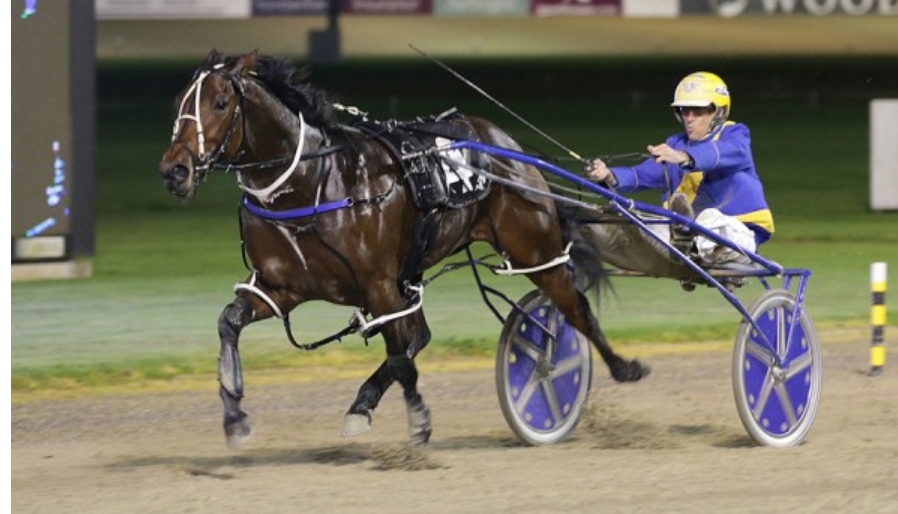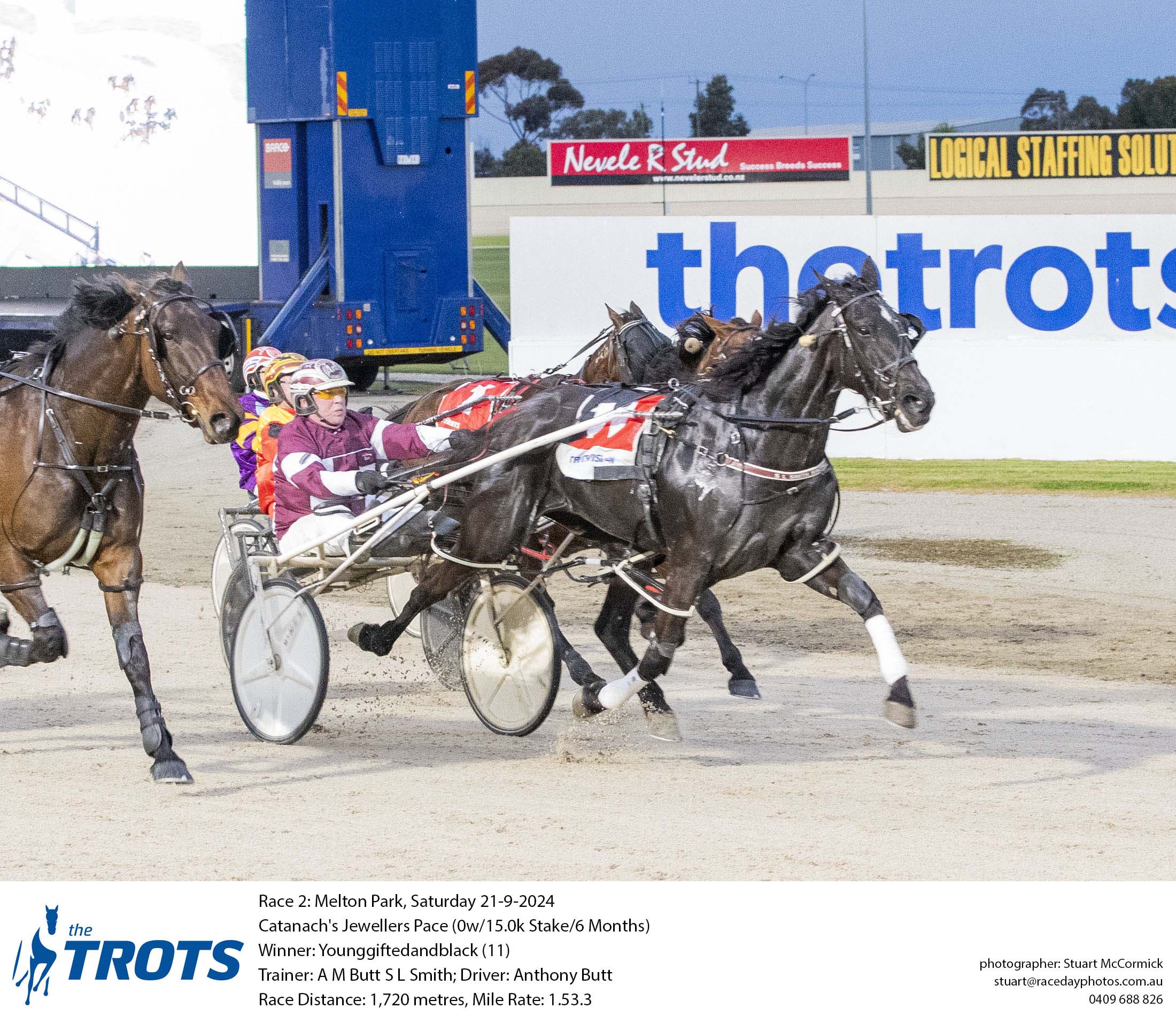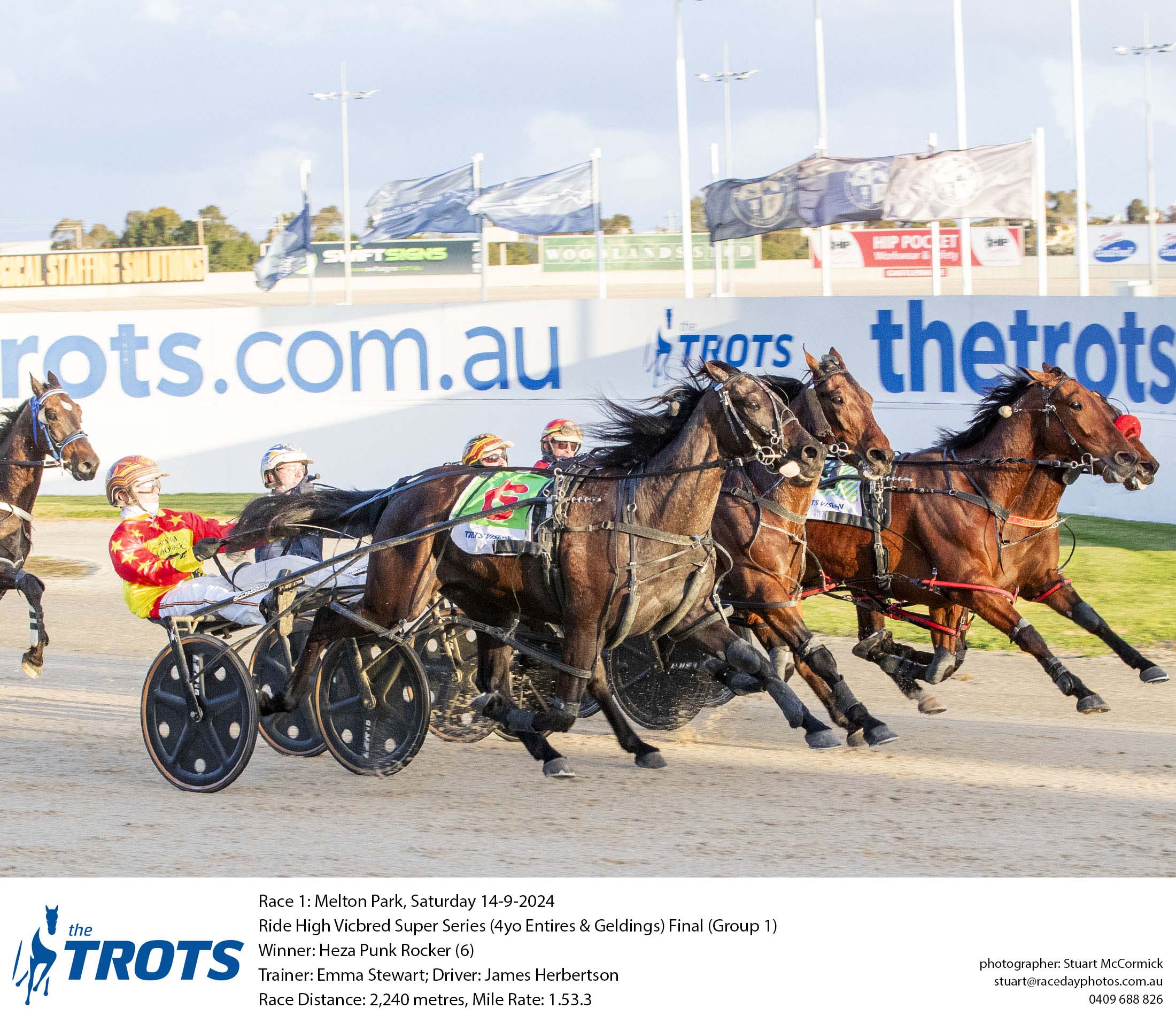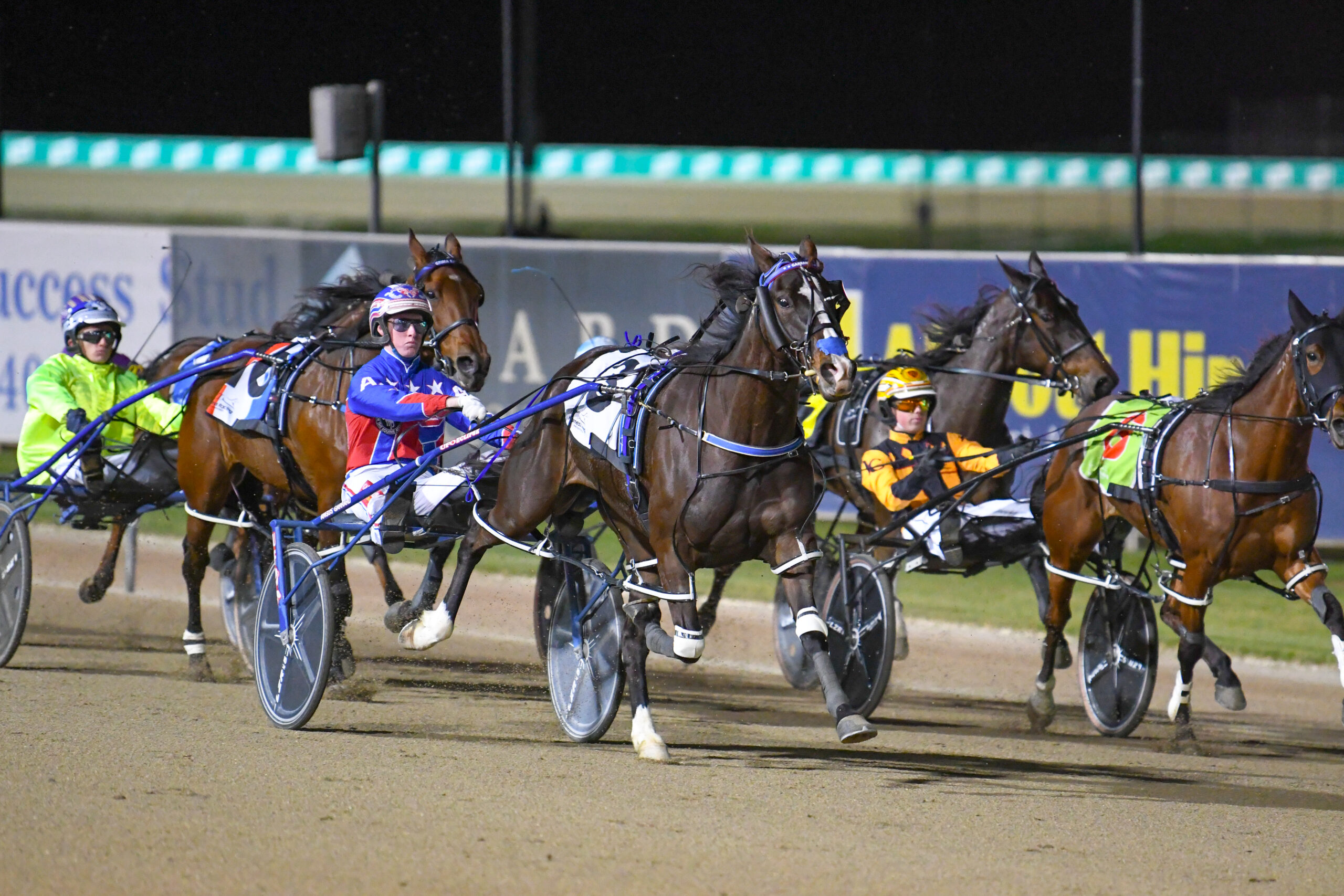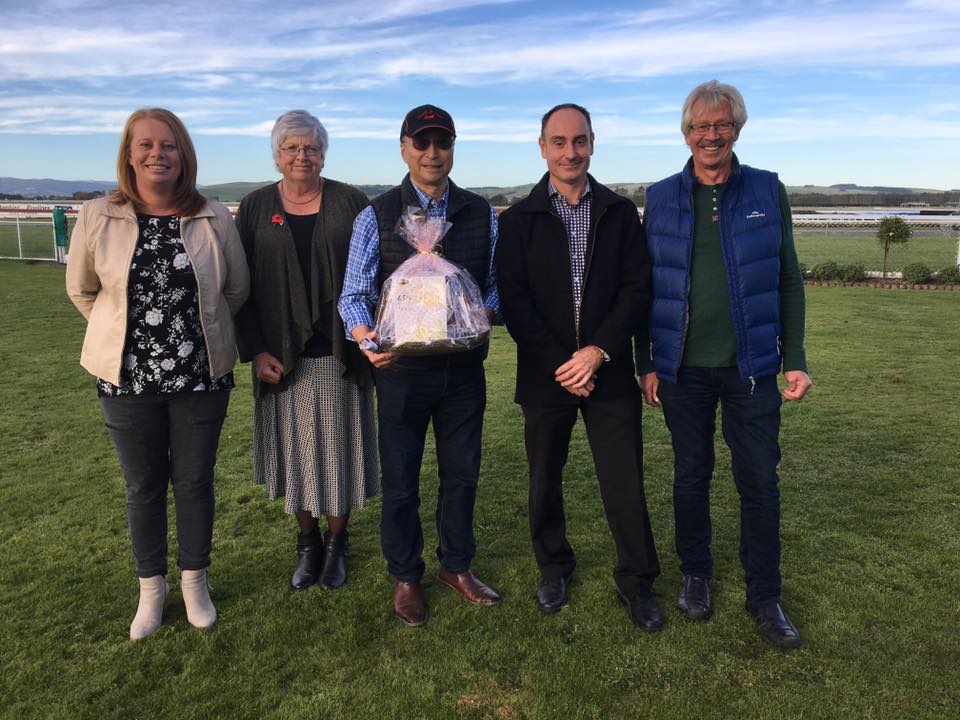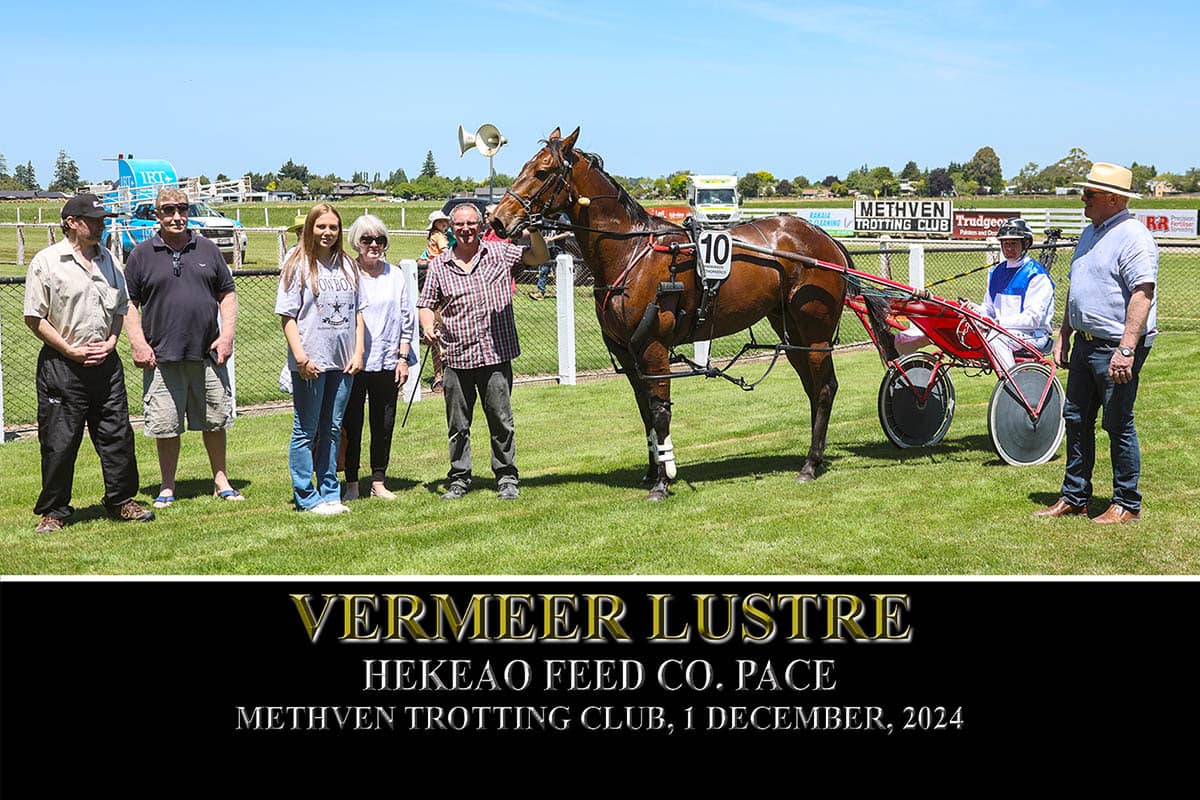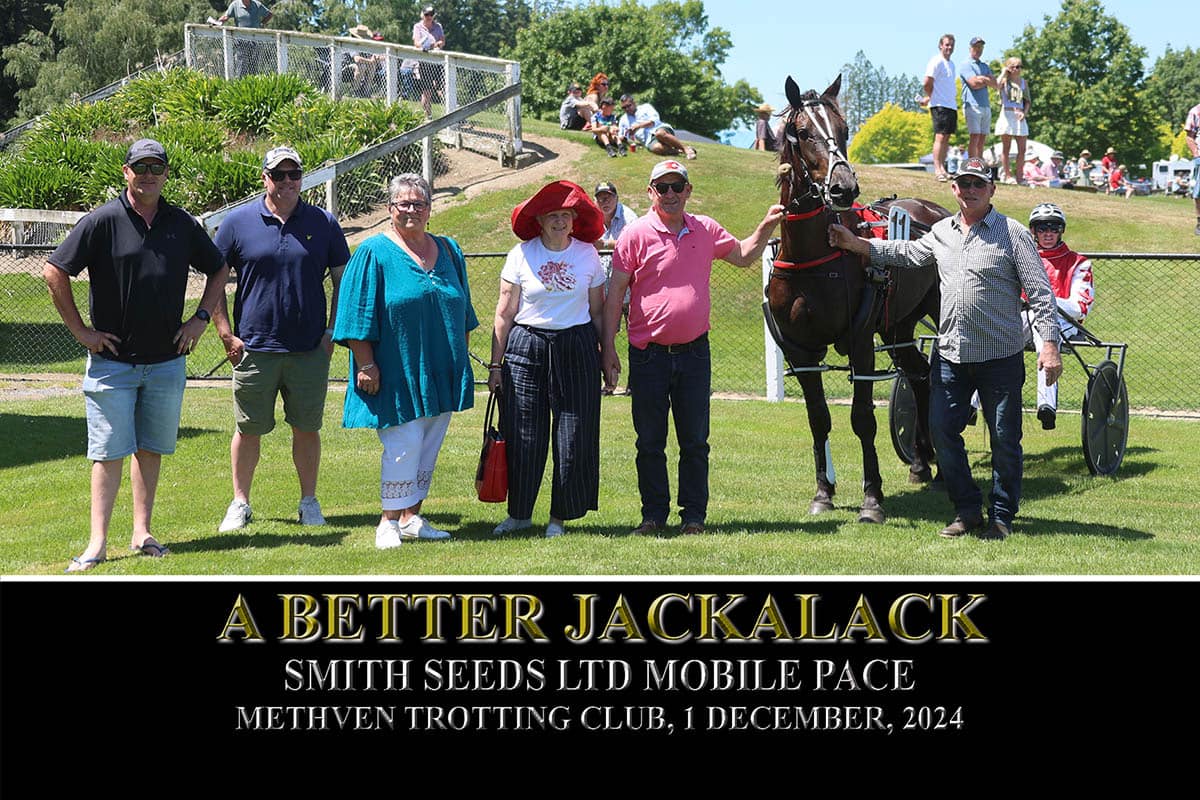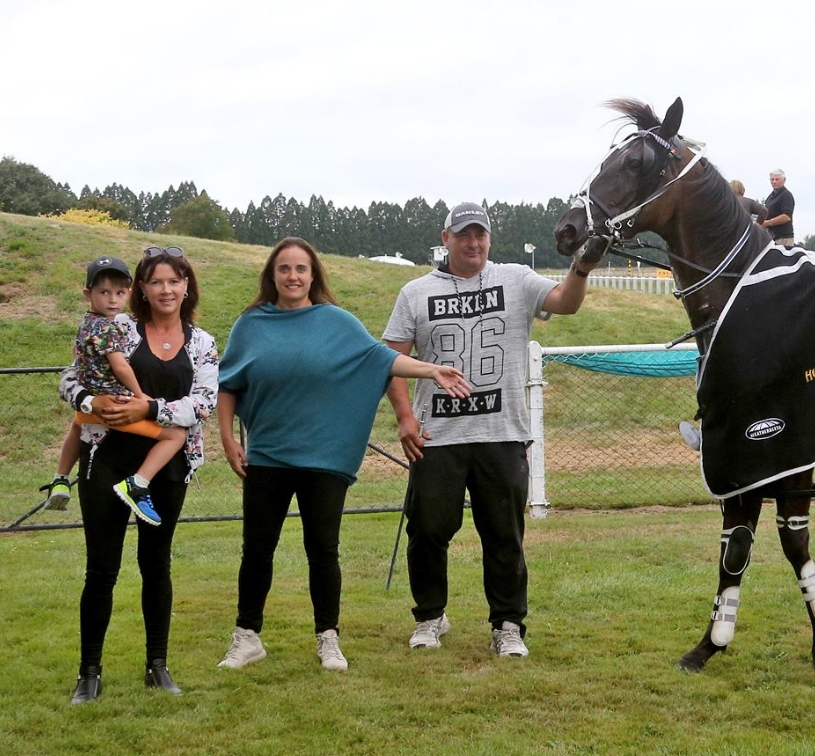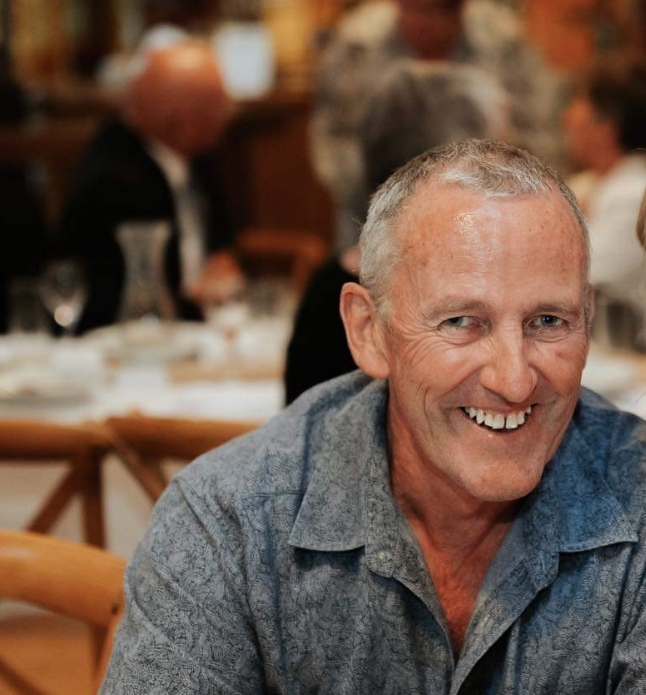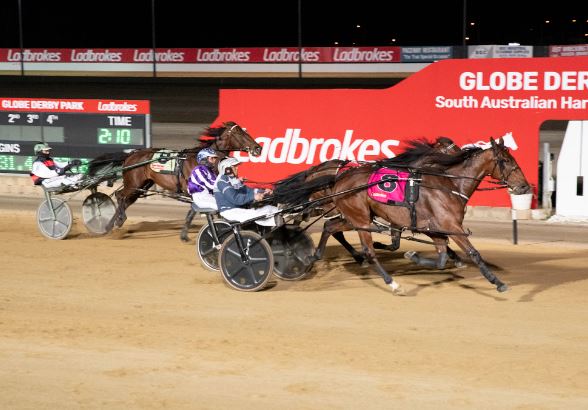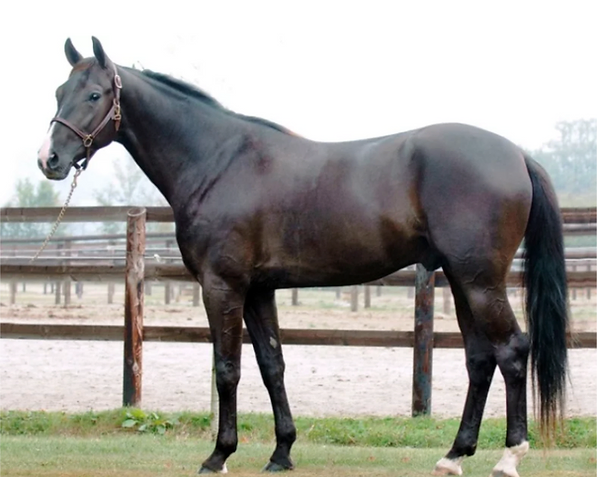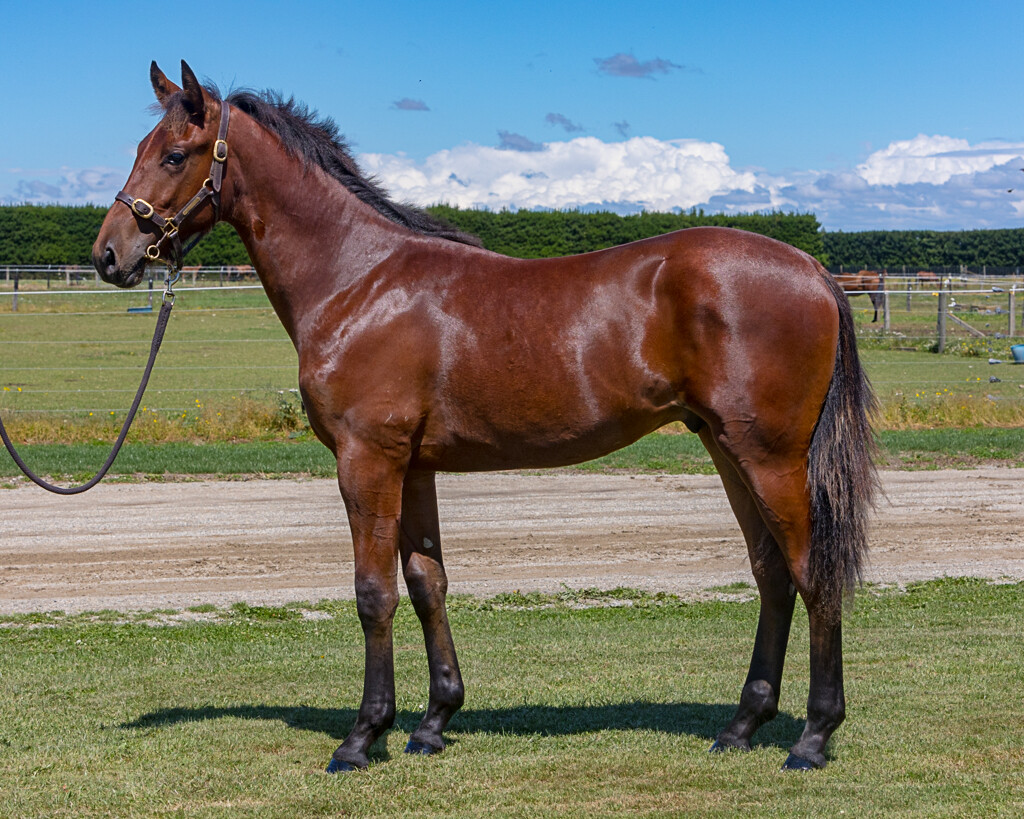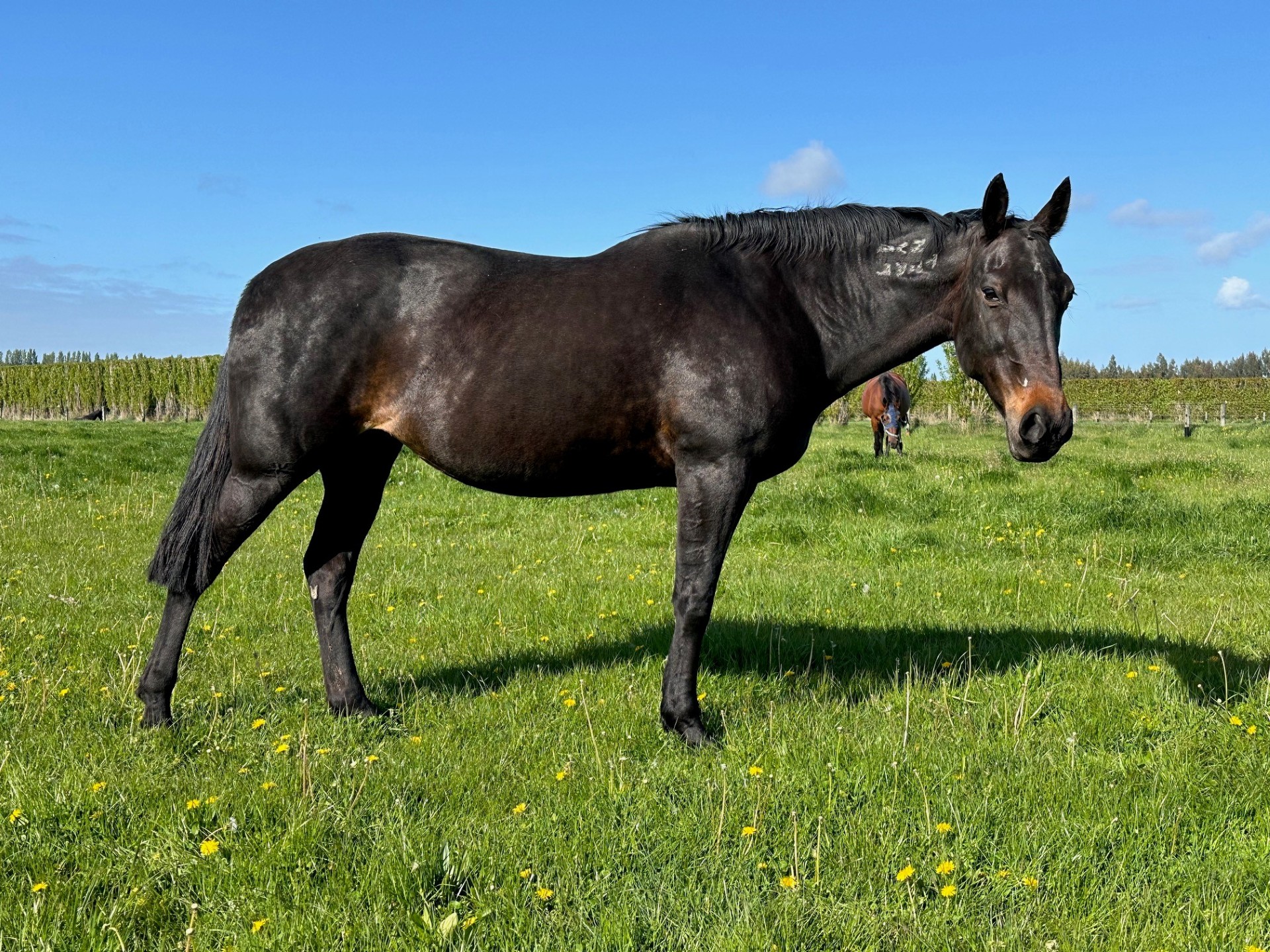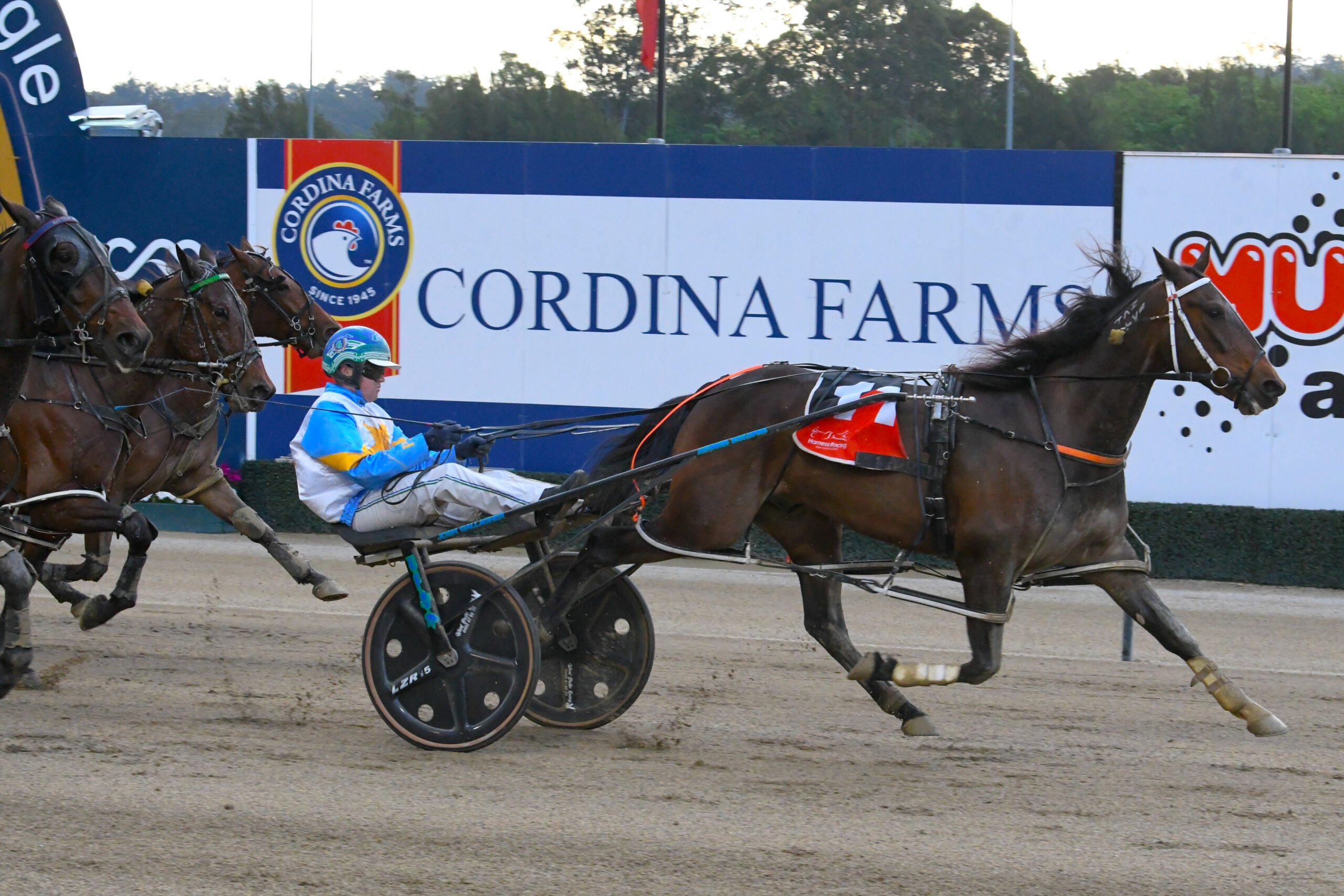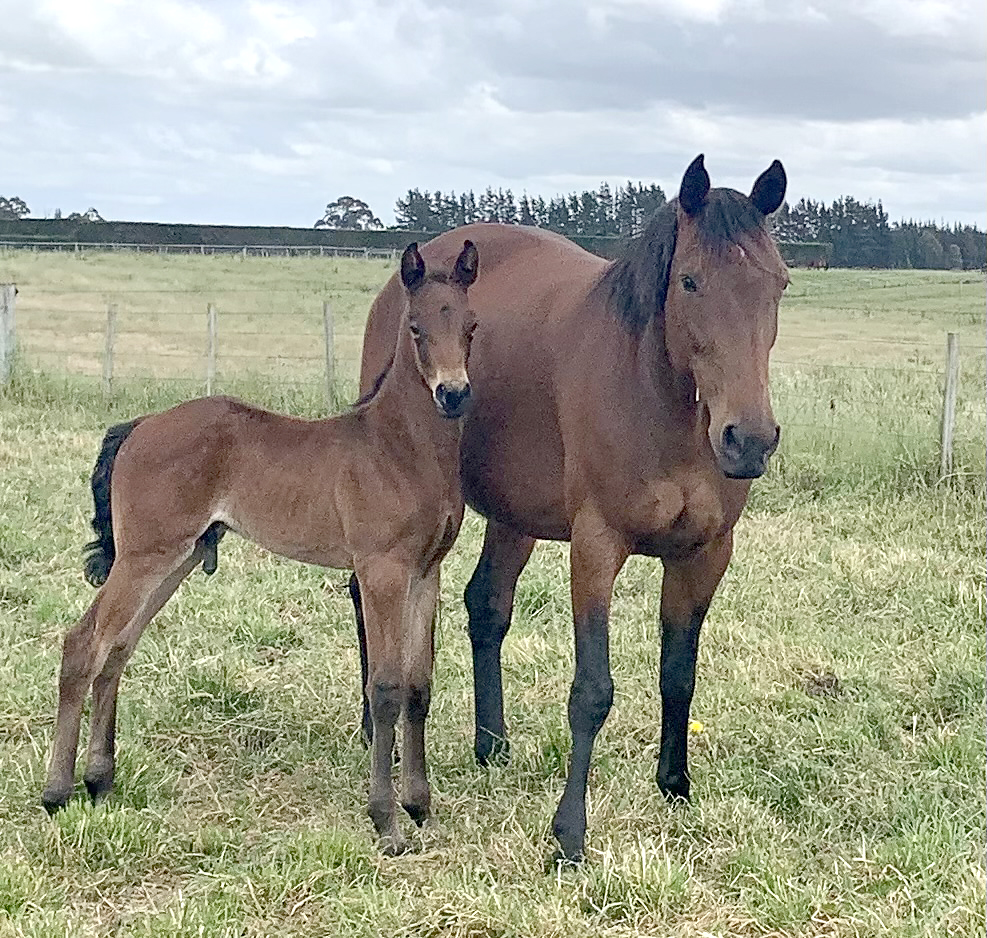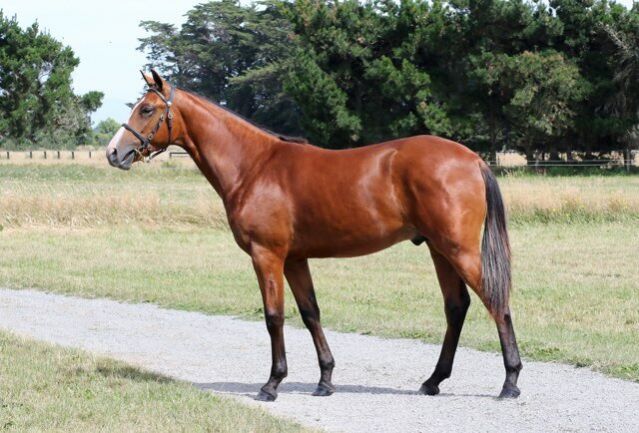Graham bids farewell to Sires Stakes
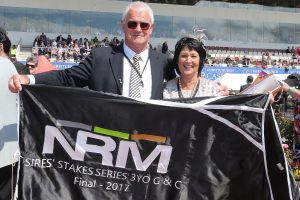
5 May 2020
by Brad Reid
With the 19/20 racings season robbed of its glamour racing by Covid19, it was also robbed, for the time being, of the opportunity to bid farewell to the matriarch of the NZ Sires Stakes Board.
After 37 years as Secretary, Doreen Graham has called time on her position at the helm.
When it comes to careers in racing administration, Doreen has few peers when it comes to tenure and contribution.
The latter is often overlooked when it comes to paid administration, simply for the fact you are deemed to being remunerated for the job you are doing.
However, the contribution made by Doreen over the years with dedication and the careful and fiscal management of industry funds has seen the Sires Stakes Board remain a shining light in what is presently our darkest hour.
Thirty seven years is longer then I have been alive, and well before things were digitised at the New Zealand Trotting Conference (HRNZ).
“Originally I started at what was the Trotting Conference and worked there for four years before heading to the broodmare paddock,” laughed Graham.
“I was approached to come and help out at the Standardbred Breeders’ Association and the Sires Stakes Board was just being put together at the time.
“They already had the Dominion Breweries Flying Fillies going and the idea for the Sires Stakes Board was to create a better environment for two-year-old racing.
“None of the clubs in those days would run two-year-old races and with Wayne Francis bringing stallions in from America for Nevele R Stud he could see that the breed was improving and something needed to be done,” she said.
When you look back through the annals and crunch the numbers, the Sires Stakes scheme did not so see a huge increase in the number of two-year-old’s that raced as much as it paved the way for better stakes and opportunities.
The leading two-year-old pacer by stake money in 1983 was the Peter Robertson trained Natural Guy.
He raced 13 times that season winning six races from 13 starts.
That included the $15,000 NZ Breeders Sires Produce Stakes Final (one of only two Group 1s for juveniles) and collected $33,365 in stakes.
The following season with the advent of the Sires Stakes Final, Billbob was the leading stakes earner for 2 year-olds having won the inaugural $100,000 Group 1 Final at the host club Franklin.
He earned just under $80,000 in stakes, more than double that of Natural Guy the previous year.
The carrot of the Sires Stakes Final for 2-year-olds saw only 20 more pacers start than the previous year, hardly a massive leap. But what transpired was more opportunity for earnings.
By 1988, a mere five years later, two-year-old pacers earnt $1.5 million in stakes.
Francis’ vision for two-year-old racing was $1million dollars ahead of where it was prior to the Sires Stakes concept when two-year-olds earned a combined $400,000 for the season.
To put that in perspective, One Change earned a cool $287,000 in 2019 from just five starts.
The leap in prize monies by 1988 was aided by the first ever National Bloodstock Sales Series race won by Tight Connection, but you could argue that one would never of happened without the other.
Staggeringly the 1990 version of the race was sponsored by TVNZ and carried a purse of $600,000.
Master Musician won the race in a 1:58.9 mile rate and took home more than the entire Cup field that year, with a winner’s purse of $365,000.
Without knowing the ins and outs of how we ever came to such an inflated stake, it is fair to say two-year-old stake money peaked that season in what must be an Australasian record for a juvenile race to this day. Adjusted for inflation, that equates to $1,080,631.75 in 2020!
Getting back to core business, the industry by and large was supportive of the idea for increased opportunities for two and three-year-old’s which in turn would lead to earlier returns to owners.
The late Wayne Francis and Tony Abell were instrumental in ensuring the idea came to reality.
“Wayne Francis and Tony Abell pushed and pushed to get it going and there was a lot of opposition to it at the time.
“I can remember getting pages of faxes as to why it would fail. There was a lot of people saying it would not work, but those two refused to see the concept fail and were crucial in seeing it through.
“Wayne was the money man behind it and had great influence at the ANZ Bank and was able to bring them on as a sponsor.
“Tony was the brains behind how the series would work,” said Graham.
“Originally, we were pretty lucky with John Rowley who was in charge of the Trotting Conference those days, as Wayne and him had a pretty good relationship. John was really supportive and helped with stuff that we needed to get started,” she said.
One of the big early challenges for the Sires Stakes Board was not in funding the series but becoming a legal entity!
“At the time to get an incorporated society, you needed 15 members and we were struggling to get the signatures to actually make that happen.
“In the end we got enough members of the Canterbury breeders to actually formulate it,” she said.
Before long, the industry support was in full swing with breeders, studs and sponsors in behind the idea.
“We started off by running a stallion service auction where they brought the stallions into Addington which is where the original pool of money was drawn for the first series to get up and running,” said Graham.
The greatest source of funding for the Sires Stakes Board has always been from the breeders themselves and a few of you will remember the first series which rather than being a voluntary foal nomination payment, was initially charged as a $10 levy on the foal registrations.
The legalities of the levy were challenged by Kypro Kotzikas and upheld by a decision in the courts, which created an administrative nightmare of returning the $10 to everyone at a time where online banking and digital records were merely a pipe dream!
“One of my first jobs as Secretary was sending the $10 back. In the end a lot of people donated the money which helped with what would have been a massive task,” she laughed.
In the days when nearly 8000 mares were being bred the concept wasn’t an easy sell. This is often the case when one challenges the status quo.
“Based on the numbers being bred the percentage was probably less then 50% because there was still a lot of people who were opposed to racing two-year-olds, particularly in Southland.
“With the three-year-old final being on Cup Day, many in the South felt because of their weather, they would not be able to get horses into that series.”
That sentiment from Southland soon changed when the Allan Devery trained Arveeae won the inaugural running of the Sires Stakes Final for three-year-olds in 1984!
The argument still remains whether the best placement for the three-year-old final is in fact Cup Day.
Being in November it is very early in the season and the argument is that it is basically an extension of the two-year-old season.
However, there is no denying that its placement on Cup Day with all the hoopla and excitement has seen the race (particularly for its sponsors) become one of the best and most exciting fields assembled every calendar year.
There is no denying it is a race that is reserved for the great equine athletes of our industry and is a hell of a spectacle.
The Sires Stakes Series is now into it’s 38th running and has not been without many challenges.
Graham considers ongoing funding challenges as paramount with a declining foal population and club funding being at the forefront.
“You will see clubs putting mega funding into their own races, but because the Sires Stakes Series has a lot of money there they don’t feel they have to put up the same.
“That is one of the issues the current Board is starting to tackle, and where that is going to go in the future is anyone’s guess,” she said.
The other challenge the Sires Stakes Board has faced in recent times is getting trainers and owners to nominate for the heats in the series the owners have paid up for.
The success of the All Stars Stable is a Catch-22 with their excellenc and strike rate almost threatening the sustainability of a series in which they and their owners have had a stranglehold.
Rather than line up in a heat where you can safely assume you have next to no chance of competing, paid up horses are being left in the paddock.
The flow on effect is detrimental with small fields seeing many heats become non totes which has a flow on effect for the clubs, sponsors and the ability for these races to drive turnover.
“Non tote heats are no good for clubs and for turnover, and the mindset to get trainers to support these races is one of our biggest challenges,” she said.
Challenges aside, you do not spend 37 years in a role without having some fond memories and the Sires Stakes concept has expanded beyond a lot of what Wayne Francis and Tony Abell would have first envisioned.
Graham points to some of the core races and also a couple of the new ones as her favourites.
“Aside from the race on Cup Day, I really love the Nevele R Fillies Series and also the two-year-old races,” she said.
“You see the young horses come through the heats and quite often the North Island and South Island horses don’t clash until they get to those finals. Pitting the two crops against each other is very exciting.
“The new conditioned races we have programmed have been great for seeing the smaller owners getting a slice of the pie. When you see them in the birdcage having won a race and received a trophy and a dress rug, that is what it is all about. It is not all about the big wins. We would all love to win a Group One but that is where these races have been a huge success.
“I am most proud of the fact that the Board has been prudent. At times it has been criticised for holding reserves, but you are in a market where you do not know whether the sponsor is going to be there or where the funding is going to come from.
“Maintaining a good level of reserves to ensure that if we ever experience challenges like we are today with Covid19 is good policy. The Board is in a financially stable position to keep going forward and that is one of the keys to its success.
Someone who has been involved with Doreen for much of her tenure on the Sires Stakes Board is Bruce Barlass having been on the board for coming up 30 years himself.
Barlass exclaims that whenever the word integrity was used, Graham was a pillar of strength in that capacity, in what was a trying position for anyone, let alone a female in racing.
“In all my time of the Sires Stakes Board I believe Doreen has been the only female to ever sit at the table.
“She was the sole employee for a board of volunteers that in many ways was an amalgamation of the industry. The Sires Stakes was responsible for bringing together every sector, be it breeders, studs, sales companies or clubs. She held them together and set the bar for integrity.
“I use to tell my staff that if a decision was to be made, hers would be the right one. In a role where there is enormous amounts of money at stake, her integrity and ability to stand her ground was evident. Particularly when coming under vast amounts of pressure for late entries and the like, but Doreen never once wavered in upkeeping a series that was fair for all,” said Barlass.
For over 30 years, Graham has shared in the thrill of presenting the winning owners with dress rugs and trophies for some of New Zealand’s richest races.
In 2017 she was to experience the thrill for herself when a horse she shared in the ownership won the Sires Stakes Final on Cup Day, Chase Auckland.
“I’ve dabbled in all sorts of horse breeding and syndicates. I’ve stood in that birdcage for every single final on Cup Day and never dreamed of actually winning a race like that.
“I think it was quite an emotional day for myself to share it with Graeme Henley, as he had been involved for a long time as Chairman and stand their together on the receiving end was amazing.
Graham has three and a half acres of garden and some grandparent duties to keep her busy in the sunny town of Nelson.
She is also hoping some of the horses she part owns resume racing soon and keeps her somewhat connected to an industry she has been involved in for a very long time.
“If we can get Chase back racing we might have a bit more time to follow him round, and Beaudiene Hustler is looking like going to the races when we ultimately resume.
“Apart from that just enjoying life and the free time,” she said.
On behalf of the NZSBA, breeders and industry participants, congratulations Doreen on a wonderful career in racing.


